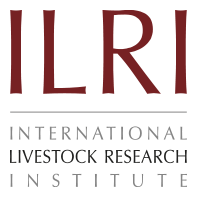Jakharana
Origin and distribution: Name of breed derives from the name of village which is native place of these goats. Jakharana goats in its pure form are concentrated mainly in surrounding area of Jakhrana village in Behror tehsil of Alwar district in Rajasthan state.
Physical Characteristics:Jakharana is a large size goat with compact body. The coat colour is black with white speckles on the ears. The hair on coat is short and lustrous. Face is straight with raised forehead. Wattle is found in some (20-30%) goats. Horn are present in both sexes which are sort, stumpy directed upward and backward. Ear are medium (15-18 cm) in length, leafy and dropping.
Udder is large and well developed with long conical teats.
Performance: The average body weight of male and females at 12 months of age were 26±1.5 and 23±0.9 kg respectively and adult body weights for male and females were 45±1.0 and 39±0.4 kg respectively. Rai and Singh (2005a) studied the management systems of the area and surveyed the home tract and observed average body weight at birth, 3, 6 and 12 months were 2.54±0.11, 12.28±1.50, 16.47±1.89 and 25.30±3.01 kg respectively. The average milk yield and lactation length were 152.87±2.69 kg and 143.0±3.2 days in semi intensive system and 107.39±2.11 kg and 118.0±2.3 days in extensive system of management. The average age at first kidding, kidding interval and twinning rate were 561.24±9.83 days, 287.78±9.89 days, and 1.54±0.16 days in semi-intensive, and 632.35±7.83 days, 332.86±9.34 days and 1.32±0.16 in extensive management system respectively. Verma et al (2007) also surveyed the home tract and reported average body weight of 6-month-old and adult male and female animals were 55.00kg and 36.98kg; and 26.33kg and 21.83kg, respectively. The average test day milk yield of a random sample of 70 does under field conditions was 3.31±0.10 litres, with a range of 2.0 and 5.0 litres/day in it home tract.. Rai et al (2001) summarized breed characteristics of Jakharana.
The polymorphism studies at DNA level for various genes (Kumar et al 2007, Rout et al 2008, Jain et al 2008, and Gupta et al 2009) indicate that the breed is having enough genetic diversity but the population of the breed in home tract may be less than 10,000 indicting immediate need of conservation. Barhat and Chowdhary,(1983) reported that Jakharana goats had the highest yield, followed by Sirohi, Marwari and Barbari breeds (121.80, 115.94, 91.39 and 82.68 kg respectively).
References





